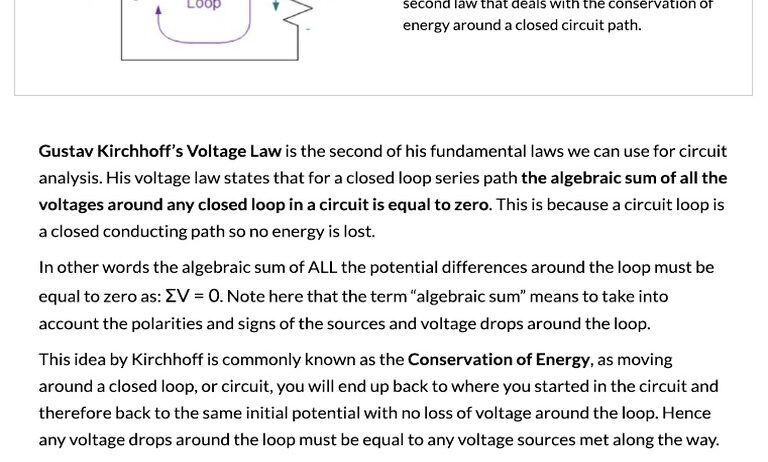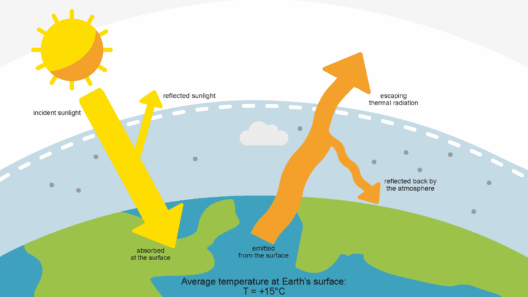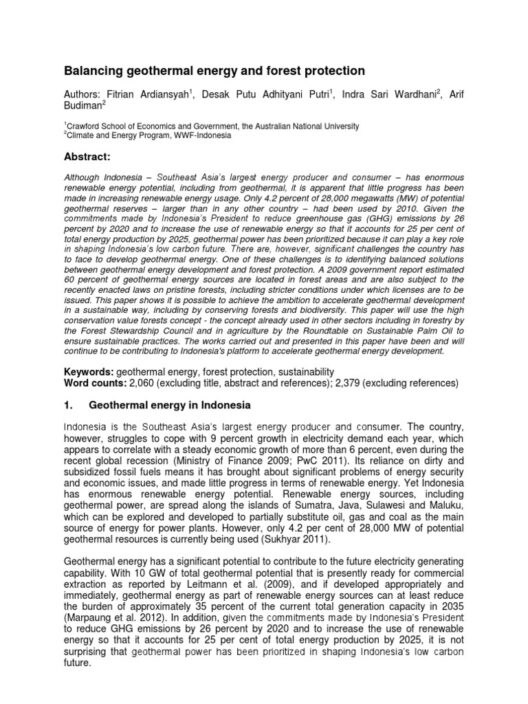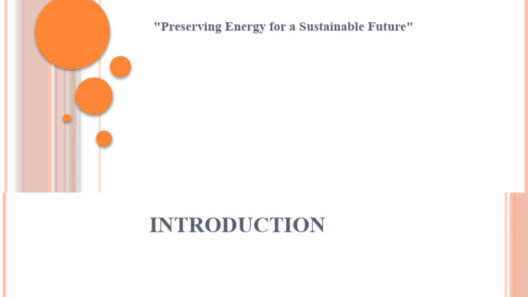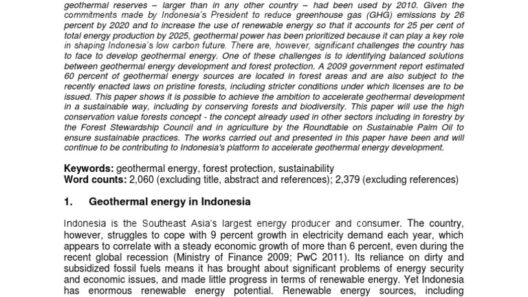Have you ever pondered whether Kirchhoff’s Junction Law directly pertains to the conservation of energy? This question opens up intriguing discussions in the realms of physics and electrical engineering. While many laypeople might consider Kirchhoff’s Junction Law and the conservation of energy to be inherently linked, a deeper examination reveals nuances worth exploring.
First, let’s set the stage. Kirchhoff’s Junction Law, named after the German physicist Gustav Kirchhoff, posits a fundamental principle in electrical circuits: the total current entering a junction must equal the total current leaving that junction. In essence, this law illustrates how electric charge is conserved at junction points, a concept akin to the conservation of mass and energy principles in natural systems. But what does this really imply?
At first glance, it might seem that the law is about energy conservation in an electrical sense. However, it primarily focuses on charge conservation rather than energy conservation explicitly. The energy aspect enters into the conversation indirectly, as the movement of electric charge generates potential differences, facilitating energy transfer. Thus, the interplay between charge and energy becomes a significant focal point in electrical engineering.
Now, let’s delve deeper by considering how charge, current, and energy are interrelated. Current, defined as the flow of electric charge, is inextricably linked to energy in a circuit. When charge flows through a conductive path, it carries energy that can be transformed into heat, light, or mechanical work, depending on the circuit’s configuration. Thus, while Kirchhoff’s Junction Law may not focus explicitly on energy, it inevitably intersects with energy conservation principles when analyzing circuit functionality.
One might pose a playful challenge here: If Kirchhoff’s law ensures that charge is conserved at a junction, does it imply that energy must also be conserved in the broader circuit? The answer lies in examining how energy operates in tandem with charge. For instance, if we have a circuit with a power source, such as a battery, energy inputs must equal energy outputs for a balanced system. This concept resonates with the broader law of conservation of energy, where energy cannot be created or destroyed but merely transformed from one form to another.
The relationship between voltage, current, and resistance also plays a crucial role in this discussion. According to Ohm’s Law, ( V = IR ) (voltage equals current times resistance), we can calculate how energy is dissipated in a circuit. When considering Kirchhoff’s Junction Law, we can analyze multiple junctions and calculate the total power consumed or dissipated throughout the circuit using the formula ( P = IV ) (power equals current times voltage). This illustrates that while the junction law governs the flow of current, power calculations inherently involve an energy perspective.
Furthermore, let’s explore real-world applications. In complex electronic systems, such as power grids, understanding Kirchhoff’s Junction Law aids engineers in designing efficient systems that minimize energy loss. Each junction’s analysis is crucial for ensuring that energy is utilized effectively and sustainably, aligning with modern goals of energy conservation and efficiency. In this light, Kirchhoff’s law becomes a valuable ally in endeavors toward sustainability—a bridge between electrical principles and energy conservation.
A tantalizing consideration arises surrounding theoretical scenarios where Kirchhoff’s Junction Law might not apply. For instance, in non-linear circuits or at the quantum level, the behavior of charge may not be as predictable or deterministic as classical physics suggests. In these contexts, deviations from intended energy conservation can manifest, raising questions about the applicability of Kirchhoff’s laws. This complexity showcases the importance of context in applying foundational physics laws to real-world situations.
Moreover, the advancement of renewable energy technologies pushes the boundaries of these classical laws into new territories. As we integrate solar panels, wind turbines, and other sustainable sources into existing grids, understanding charge dynamics and energy distribution becomes crucial. The conversation surrounding Kirchhoff’s Junction Law evolves, pushing engineers to innovate and develop methodologies that account for these dynamic and fluctuating energy inputs.
Throughout this exploration, it is vital to underscore that while Kirchhoff’s Junction Law does not directly address energy conservation, it plays an integral role in framing how charge movements influence energy dynamics within a circuit. Each time we analyze a junction or design a circuit, we are engaging in a delicate dance between charge and energy that underscores the very principles of conservation that govern our physical world.
In conclusion, while the discourse surrounding Kirchhoff’s Junction Law may lead one to ponder its direct connection to energy conservation, the reality is more intricate. Charge conservation at junctions serves as a fundamental cornerstone in electrical theory that indirectly supports energy conservation principles. The intricate relationships within circuits highlight that energy and charge are inextricably linked, making the exploration of their dynamics essential for understanding the broader implications of electrical engineering and energy conservation. The challenge remains: how can we leverage these foundational principles as we tread the path toward a sustainable energy future?

